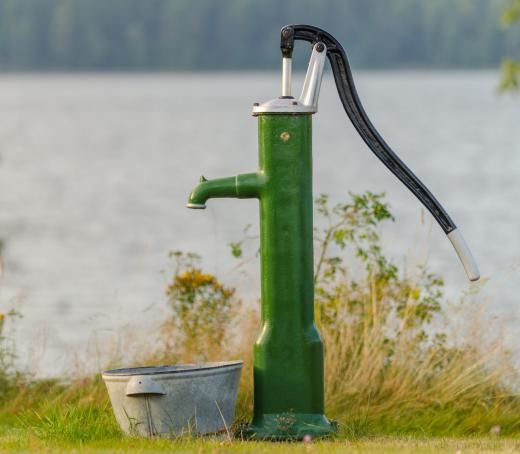Suction pumps have been used for transferring liquid from one place to another since ancient times. Over the course of its development, the suction pump has been utilized for a variety of important jobs. From old-fashioned hand pumps for water to modern electric end pumps that deal with chemicals and oil, they have always used vacuum power to perform a variety of difficult jobs.
The simplest and oldest type of suction pumps were first used by the Romans many centuries ago and are still used in the 21st century. A hand crank is fluctuated many times in order to create a vacuum air lock within a pipe system that leads, usually, to a water well. When the seal is successfully created, it ferries water through the tubes and out a spigot. This method of pressure pumping has been used for things such as providing drinking water and supplying early fire departments with blaze-fighting water.

A more modern take on this same premise is the end suction pump. These pumps have massive electrical motors that help create a vacuum in many home and industrial situations. Simple, turbine-powered engines spin when activated and effectively remove the air in the piping system, drawing water from its source. Household sinks use a smaller version, and this type of suction pump also is used by many industries to transport liquids such as chemicals so that people do not have to handle them.
A spinoff from the end suction pump is the double suction pump. An end suction pump draws up liquid through a single input, and an imbalance of thrust can be created when it exits the motor's centrifugal force. Double suction pumps bring liquid into two chambers and equally distribute liquid, easing the wear and tear on the mechanism. This version is preferred by many manufacturing and production facilities but is restricting because its price is usually much higher than that of a single suction pump.
Suction pumps have been utilized on smaller scales as well, proving that these devices are not just for large companies or for home consumption. The automotive industry, in particular, has embraced this technology, and nowhere is this more clear than with oil changes. Speedy changes are becoming an industry standard, and one way this is accomplished is by using oil suction pumps. Using the same vacuum physics principles as in the other types of suction pumps, this pump attaches a hose to the oil pan of an automobile and draws out the spent oil in a fraction of the normal time required for the oil to drain out of the pan.
